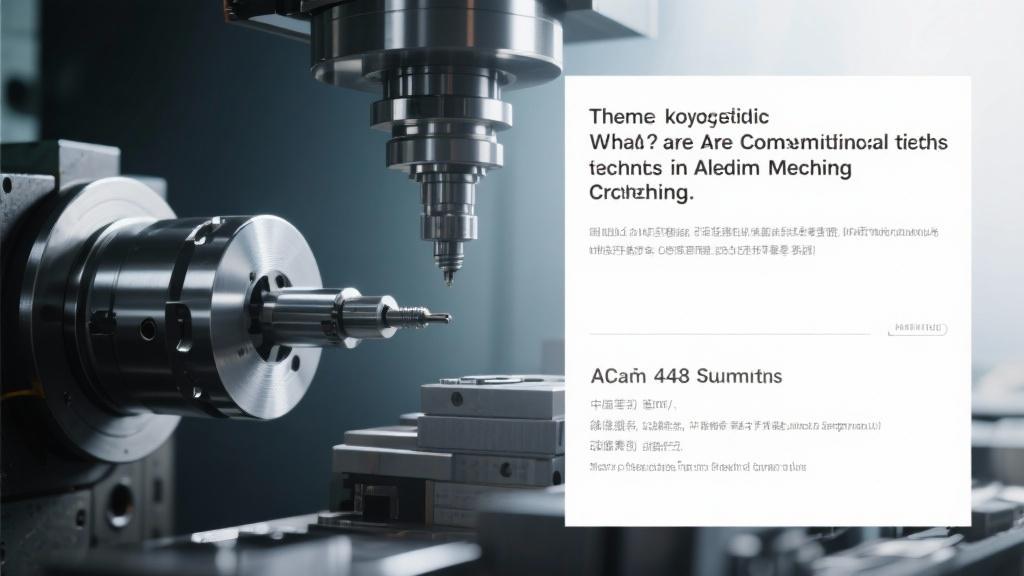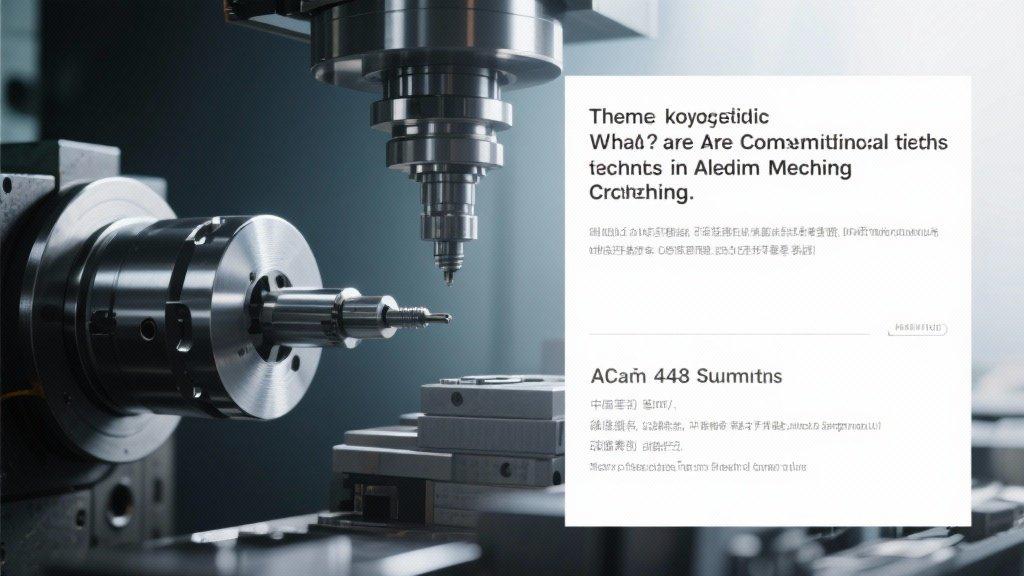Understanding these processes not only helps manufacturers optimize production but also improves the quality of the finished product. We will dive into the details of each method, highlighting the tools and innovations that enhance efficiency and precision in machining aluminum. Whether you’re a seasoned engineer or a business owner looking to improve your operations, this exploration of aluminum machining techniques will equip you with the knowledge to make informed decisions. Join us as we unravel the intricacies of aluminum machining, and discover how these common techniques are shaping the future of manufacturing.
Aluminum machining is crucial in manufacturing industries due to its lightweight, durability, and versatility. This article dives into the common techniques used in aluminum machining processes, providing insights into how they work and their applications. Understanding these techniques helps manufacturers leverage the right methods for their products while optimizing costs and ensuring high-quality outcomes.
Common Techniques in Aluminum Machining Processes
There are several widely-used techniques for machining aluminum, each serving specific functions and delivering unique benefits. Some of the most notable techniques include milling, turning, drilling, and grinding. Let’s break them down:
Milling
Milling is perhaps the most recognized machining technique, involving the use of rotary cutters to remove material from the workpiece. The process can be performed on horizontal or vertical milling machines and is notable for its ability to create complex shapes and features.
Turning
Turning involves rotating the workpiece against a stationary cutting tool, making it ideal for cylindrical parts. The lathe machine used in turning can create a variety of shapes, from simple cylinders to intricate profiles.
Drilling
Drilling is a straightforward technique used to create holes in various sizes and depths. While many might think of it as a basic operation, choosing the right drill bit and settings is vital for optimizing performance.
Grinding
Grinding is an abrasive machining technique that can achieve high precision finishes. It’s typically the last step in machining processes, ensuring that the surface of the aluminum component meets specified requirements.
Frequently Asked Questions
Q1: What factors should I consider when choosing a machining technique for aluminum?
A: Factors include the desired precision, complexity of the part, production volume, and cost considerations. Each technique has its strengths depending on these criteria.
Q2: How does the choice of cutting tools impact aluminum machining?
A: The right cutting tools can increase efficiency, reduce tool wear, and improve the quality of the finished product. High-quality, suitable materials for specific applications are crucial.
Q3: What innovations are shaping the future of aluminum machining?
A: Technological advancements such as automation, CNC machines, and hybrid processes that combine traditional methods with modern technologies are enhancing precision and efficiency.

What are the most common techniques used in aluminum machining?
The most common techniques include milling, turning, drilling, and grinding. Each method serves different purposes and is suited for specific applications in manufacturing.
Milling is great for complex shapes, while turning is ideal for cylindrical parts. Drilling is used to create holes, and grinding is necessary for finishing surfaces to meet quality standards.
How do I choose the right machining technique for my project?
Choosing the right technique largely depends on the part’s complexity, the precision required, production volume, and budget. If you need a simple cylindrical shape, turning might be best.
On the other hand, if you’re dealing with intricate designs, milling could be the way to go. Weighing these factors will help you make the best decision for your project.
What types of tools are commonly used in aluminum machining?
Common tools include end mills for milling, turning inserts for lathe operations, drill bits for creating holes, and grinding wheels for finishing surfaces.
Each tool has different shapes and materials suited for specific tasks, making it essential to select the right one based on the machining technique you plan to use.
What innovations are influencing aluminum machining processes?
Innovations such as CNC machining, which allows for highly automated operations, are making significant impacts. These advancements enable greater precision and efficiency in productions.
Additionally, the use of advanced materials like carbide for cutting tools is improving performance and longevity, allowing for more complex projects to be completed consistently.
How can I ensure the quality of aluminum parts produced through machining?
To ensure quality, it’s important to choose the right machining technique and tools. Regular maintenance of machines and consistent monitoring of the machining process also play a crucial role.
Additionally, implementing quality control measures throughout the production can help catch any issues early, ensuring that the final products meet the desired specifications.









